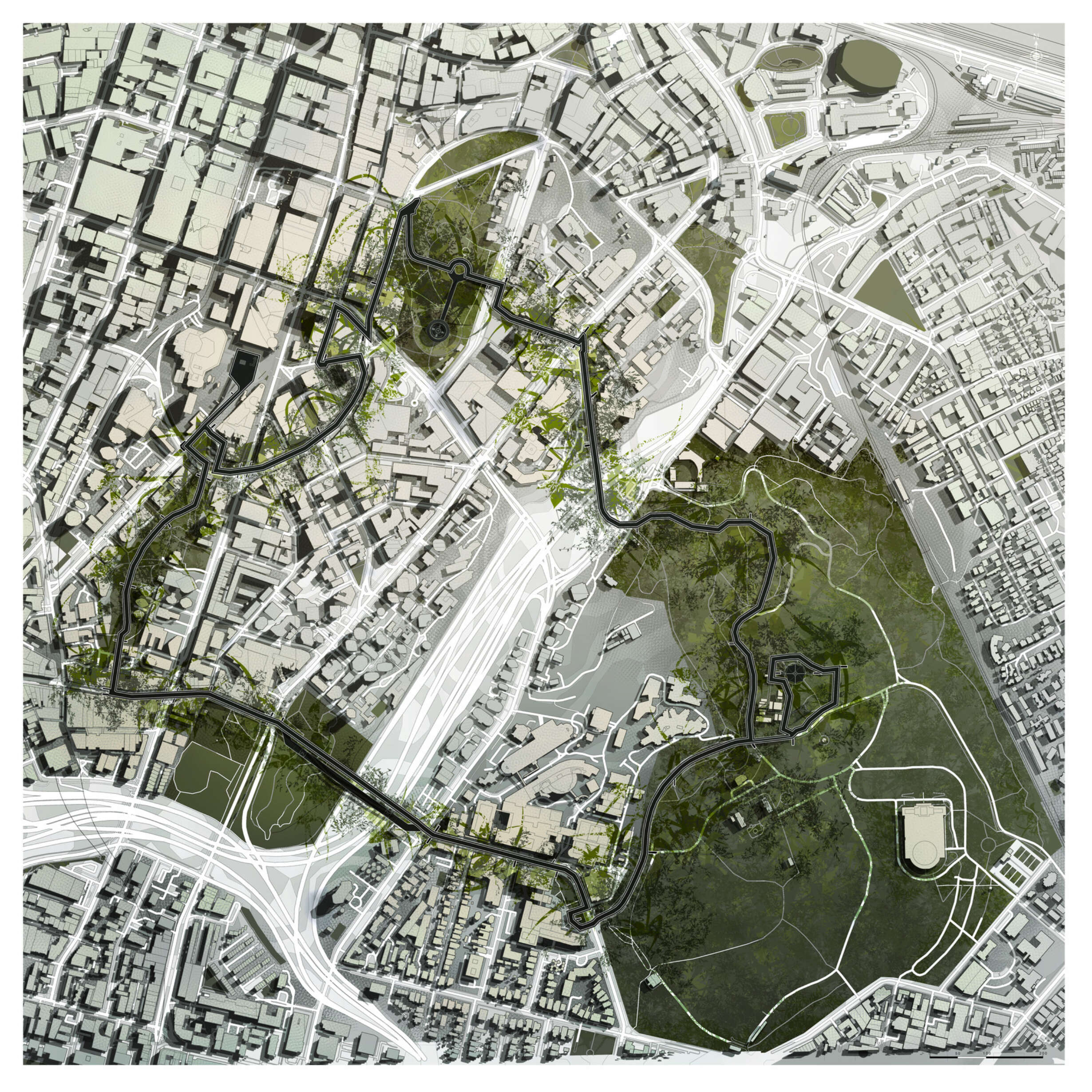My thesis therefore aims to tie together urban architecture and cinema with the more-than-human. Critically analysing city park precedents that successfully amalgamate flora and fauna with human-centric infrastructure, the research investigates how a hyper-cinematic installation can establish an environment that creates awareness on fragile ecologies while also improving public safety after dark.
Auckland’s Albert Park, which is notorious for being dangerous at night, provides the prime site for this investigation that is predicated on creating a central performative event space with an urban greenway running through Auckland Domain, Myers Park, and Symonds Street Cemetery. Through rewilding, this expanded greenway ties together the ancient Waihorotiu and Waipapa streams of Tāmaki Makaurau that thread the threatened ecologies, extinct species, cultural and geological changes throughout the history of Auckland’s landscape. The projections and communal spaces in the greenway utilise hyper-cinematic mechanisms to create a safer space at night, connecting Auckland’s key parks to form a green urban oasis.



















